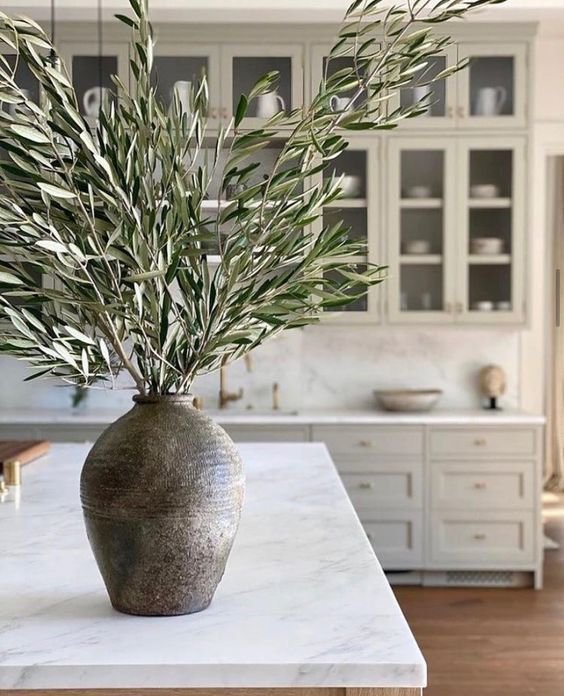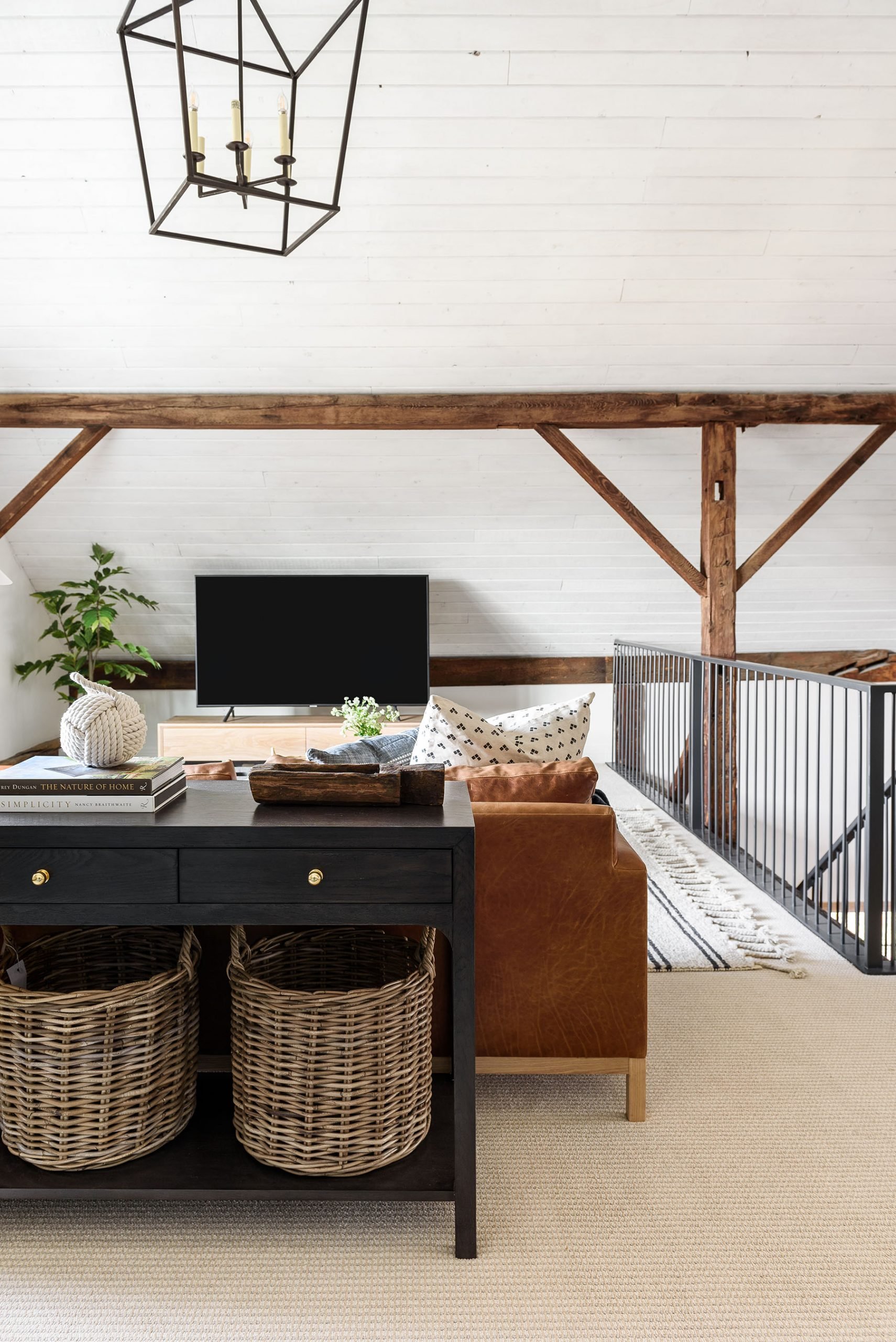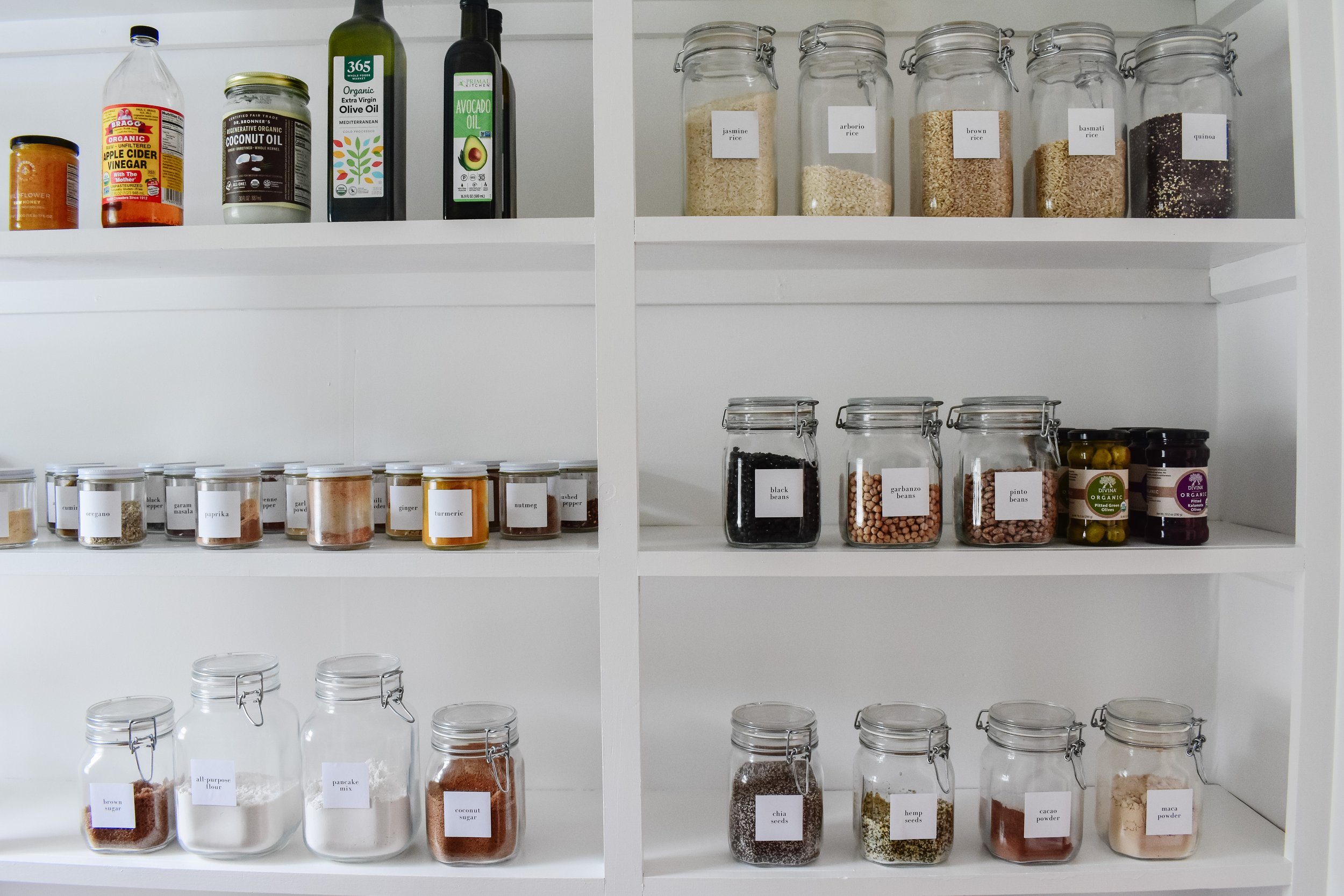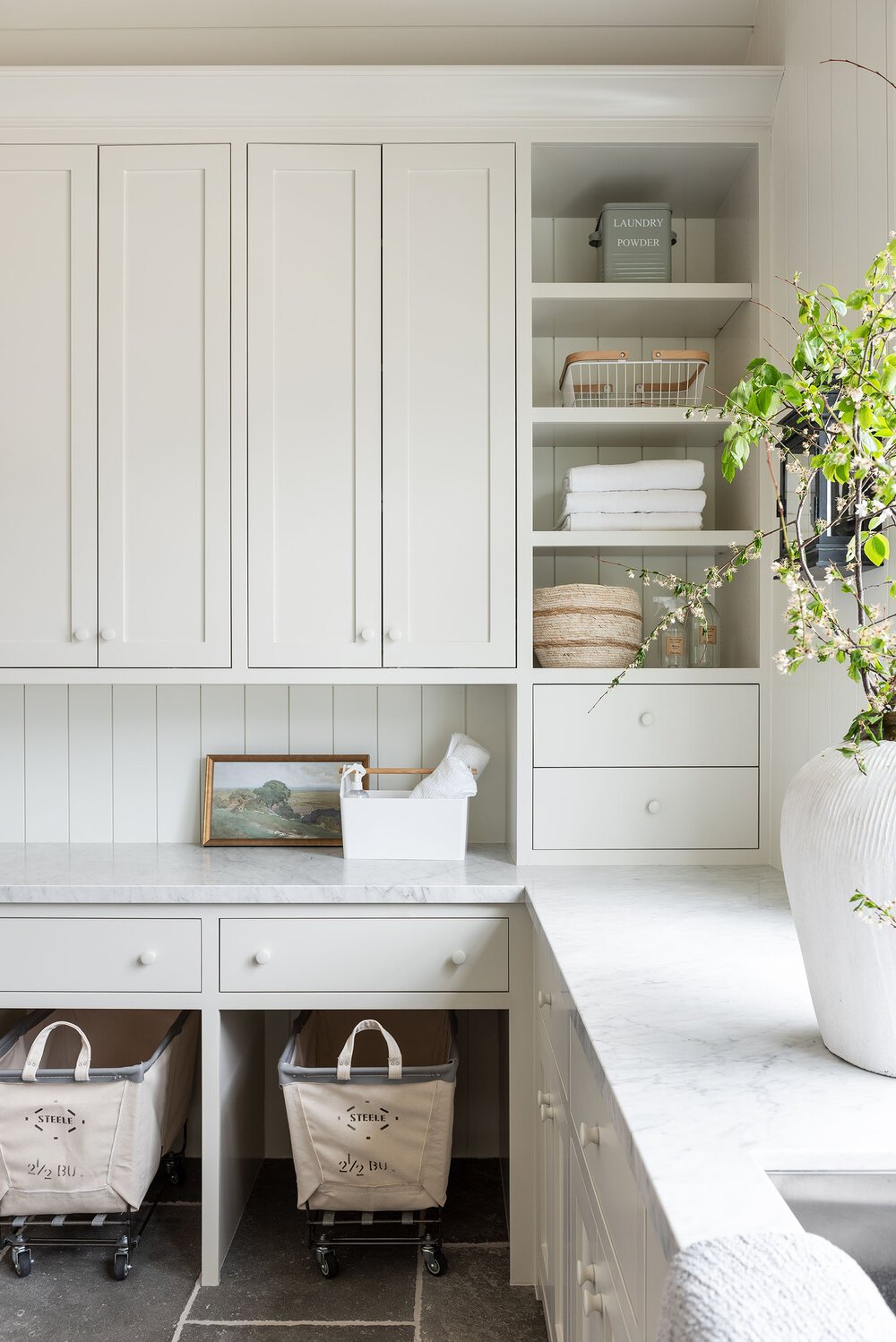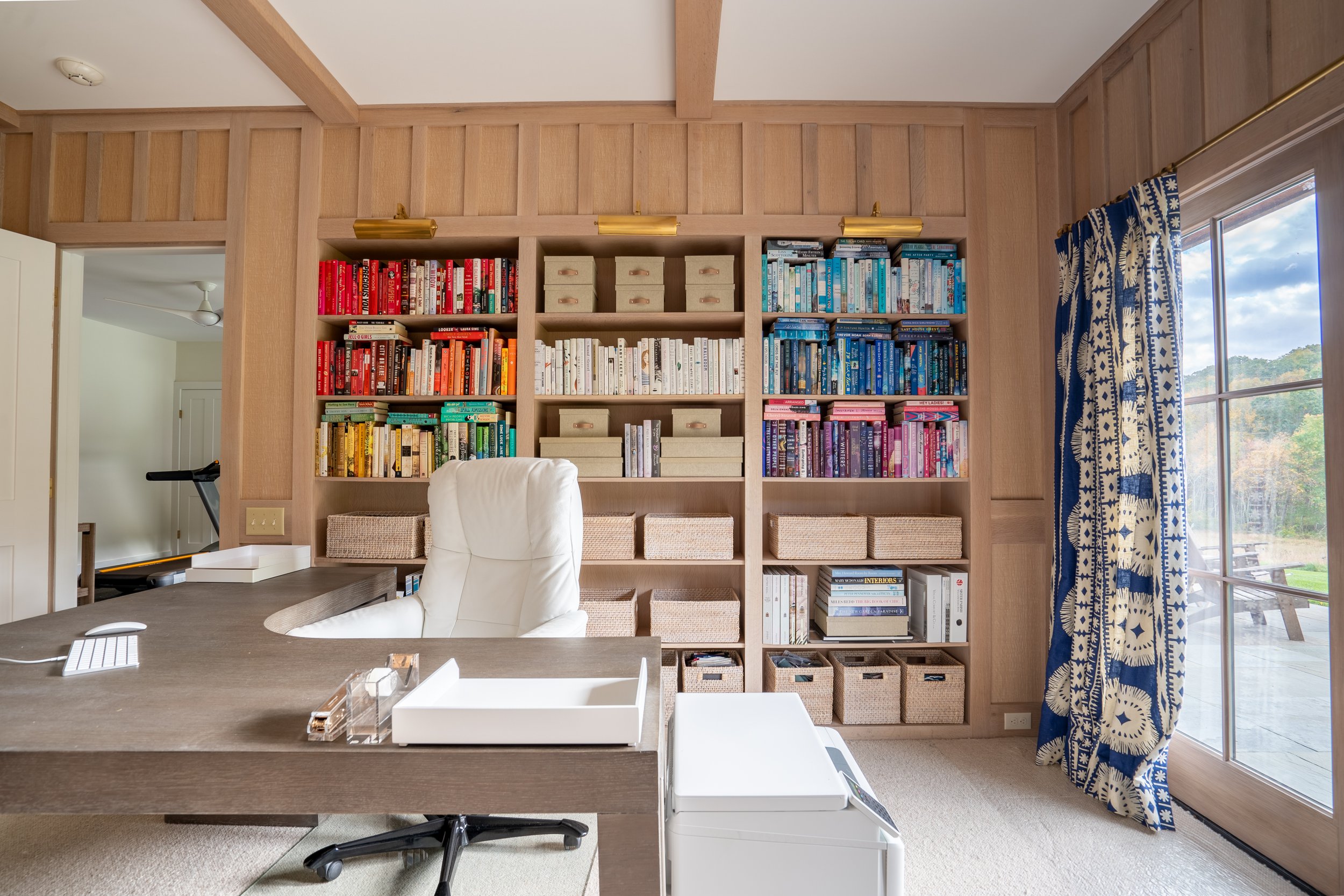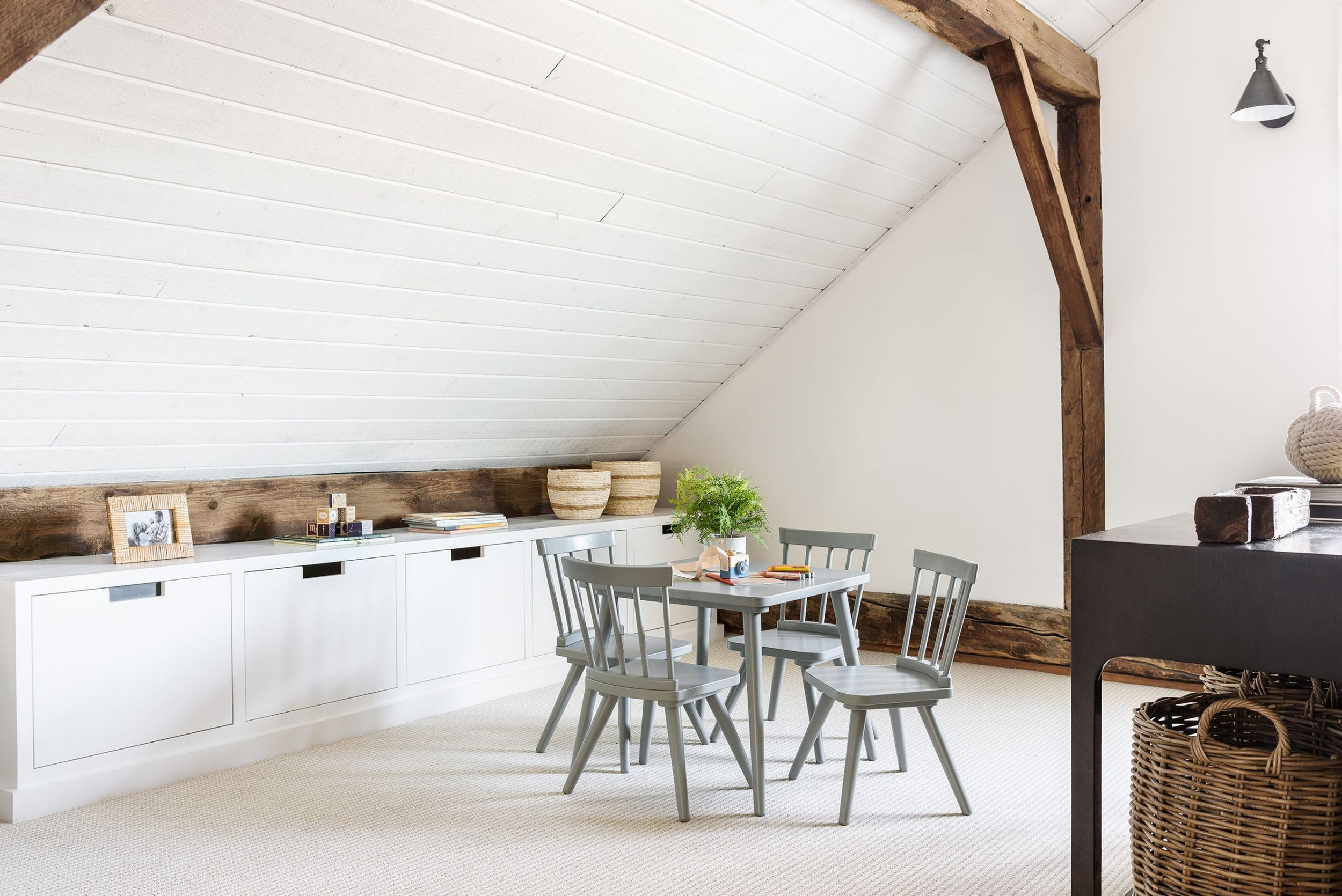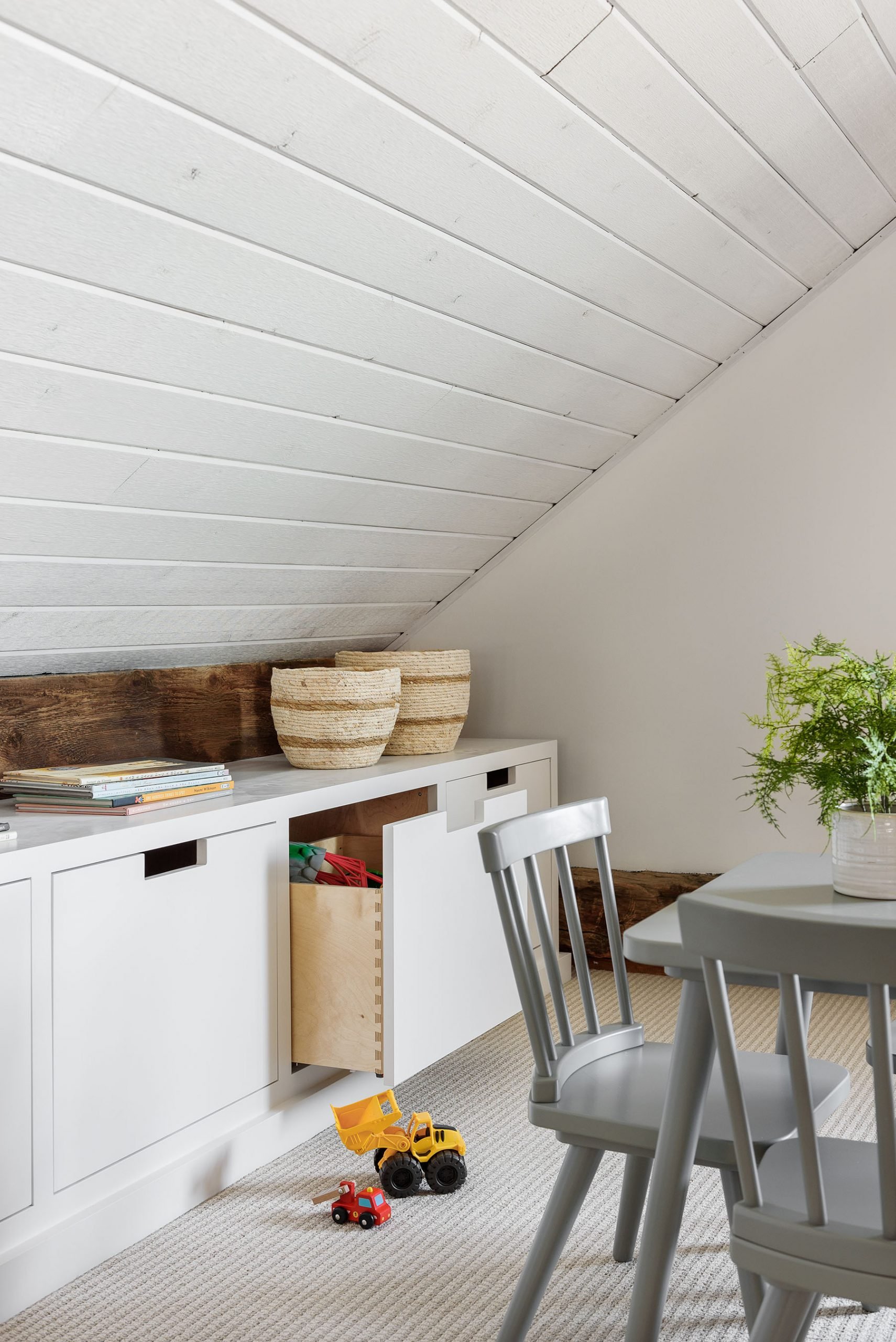How To Declutter Your Home For The New Year
Hit refresh, just in time for the new year.
This article was originally published on The E List on January 24, 2022
Whether it’s under the guise of spring cleaning, or simply a new-year-new-you approach to minimalism, a good deep purge doesn’t always have to be a chore.
During many of her projects, Chelsea points out that the biggest mistake people make is to confuse organizing with cleaning. Cleaning up a room doesn’t mean you’ve created sustainable systems, so the mess is bound to reappear. If you take the time to think through how you use your space, you can create solutions that you’ll be able to maintain. Here, she shares a few highly doable tips and tricks to get you started on creating hyper-organized easy-to-use spaces.
For The Mudroom/Entry
Create a drop station to hold your daily items like keys, purse or a wallet. Make sure to pick baskets and bins that will adequately hold everything to keep your entryway/mudroom neat.
Let all family members know they’re responsible for their own entryway hook, hanger, or cubby. If you have a partner, announce this as a couple so you won’t feel like the “bad organizing cop.” Teaching kids a little responsibility is a win for all.
Instead of allowing mail to pile up throughout the week, immediately sort mail when you receive it- file, “requires action”, or shred. Designate a tray or box for the papers that require filing and/or action, then tackle once per week.
If you like to kick your shoes off when you walk inside, tell yourself you can’t start dinner until your shoes go back in their correct bin, pocket, or shelf. When you wait until later, they’re less likely to make it home.
For The Living Room
Keep your living space clutter-free by carefully curating what is displayed on shelving and on top of your coffee table. If you no longer love looking at something, give yourself permission to donate it or put it in storage.
If you have young kids, give them baskets in the room for them to own. They can fill it up with whatever toys they want, and switch out the contents as often as they like. This will keep the quantity of toys limited, the items contained, and your space organized.
The living room gets junked up quickly with everyone’s stuff. Set a timer for five minutes and instruct everybody in the house to do as much as they can in that time frame to reset the space. Do it earlier in the evening when you have more energy, rather than later. You’ll be surprised at how much you can accomplish.
For The Kitchen
Edit out kitchen utensils you no longer use or have in multiples. Keep the kitchen gadgets to the necessities and be realistic about what tools are really providing a useful function. Use drawer inserts to contain things so that they stay neat and organized.
Use countertop canisters for morning staples like coffee, tea and sugar. It’s an inexpensive way to add extra storage and style/accessorize your kitchen.
When you get to the end of a recipe, don’t stop when the cooking is done- take time to put away your ingredients, wash pots, and wipe down the counter. Even just cleaning your prep items while the main dish is in the oven is an easy way to keep your kitchen sanity.
When it comes to keeping the fridge organized, meal planning is super important. Buy food for specific meals or recipes so you know exactly when you’re going to use it. Replenish pantry staples as needed.
For The Pantry
Be realistic with your time and lifestyle. If you’re a busy parent who has a time-consuming job, you’re not going to want to empty every box of pasta and cereal into jars when you get home from the grocery store. It would be better to simply have bins labeled Pasta and Cereal to make unloading groceries quick and easy.
Take stock of the typical food you buy and the quantities in which you buy them. If you buy in bulk, make sure to have space for overflow items that don’t fit into your bins. If you have a huge amount of snacks, dedicate a couple bins to those items so you aren’t cramming everything into a single container.
Think about the items you use every day, the items you use occasionally, and the items you almost never use. For instance, if you eat cereal every day, keep a breakfast bin in easy reach. If you only bake twice a year, keep your baking bin at the top of the pantry to free up valuable real estate on lower, easier-to-access shelves.
Almost every pantry can be divided into breakfast, dinner, snacks, sweets, baking and cooking. By grouping items into large categories you won’t get stuck with something that doesn’t have a home.
It can be tempting to quickly shove groceries into the nearest cabinet once you get home from shopping and move on with life. But take care to put items in their designated places. That way, the next time you need to find the rice, you won’t have to call a search party or run out to buy an unnecessary extra bag.
For The Bedroom Closet
This will differ for everyone, but I always suggest considering the one-year rule. If you haven’t worn it in the past year, there’s a good chance you won’t wear it again. Donate it, give it to a friend, sell it or consign it. Leaving items you don’t wear in your closet just crowds your space and makes it harder to find the things you do wear. For pieces that are more season-specific (say a summer dress or a winter coat), evaluate those items once the season has fully passed.
When you make the decision to clear out items that don’t fit from your closet and wear clothes that fit and flatter the body you have, you are making a statement – you are embracing yourself and your current body and treating it with the respect it deserves. Let’s start sending ourselves the message that we deserve to be treated with love and acceptance no matter what body size we are today.
Keep all your hangers uniform. AGH is partial to slim velvet hangers, but no matter what you like best- just make sure you invest in a matching set. It’s the single best game changer for any closet and instantly elevates your space. From there, group tops, pants and dresses together and color code within each category.
If your shoes don’t fit nicely, try using clear shoe boxes. You can select sizes for heels, boots, or flats, and can easily stack them to triple your space.
For The Laundry Room
Place your laundry products in bins, and a couple of products in labeled jars (such as powdered laundry detergent, dryer sheets/balls, and clothes pins). Your shelving stays neatly organized and a few canisters add an upgraded look to your space.
Keep a bin in your laundry room for mismatched socks. They’ll eventually find their match! Once a month, clear out the bin of singles that haven’t found their mates.
Fold your laundry in the laundry room. Resist the impulse to take a basket of freshly washed and dried clothes to the couch to do some folding while catching up on Netflix. Why? Keeping everything contained inside the laundry room means less chance of losing items or failing to maintain your system. And, more importantly, preventing laundry from turning into an all-day affair. Listen to a podcast if you need a distraction.
For The Office
Take into consideration all of the office supplies you have and the allotted storage space. These two factors will determine the correct organizing systems in your office. Utilize products like in-drawer organizers for pens, pencils, and highlighters; magazine or desktop files boxes for quick-access items; and large file boxes if your desk doesn’t have filing drawers.
In an ideal world, you file your papers away as soon as they hit your desk and you’re done using them, but that’s not always the case. If that’s unrealistic for you, set aside 10-30 minutes at the same time every week (say, Sunday 8am over coffee) to file your papers away. You’ll thank yourself later.
I never advocate for what I call “over organizing,” but I do suggest sorting the emails you want to keep into broad categories. I have folders in my personal email for orders and receipts, home-related stuff, tax receipts, personal notes, etc. Keeping the categories big and broad makes it easy to “file” emails and find them later. And stop email clutter from entering your inbox in the first place- Delete, spam and junk immediately, and unsubscribe from all unwanted emails. Take note and be real with yourself about what companies/brands you really need emails from. Yes, it’s nice to know that x-brand is offering 25% off, but sometimes that leads to needless spending.
For Kids’ Rooms
Kids grow out of toys as quickly as they grow out of clothes. We recommend editing your kids’ items quarterly to clear out the clutter.
Focus on simple systems that are intuitive to learn and easy to maintain. Start by grouping all the similar categories together and position items on dedicated shelves. (Frequently used items should be kept down low, and sentimental items on the top shelves.) Color-coded toys, books and clothes make it easy for kids to find what they are looking for and easy to put away at the end of the day.
Getting kids involved in the organizing process and showing them not only the importance of decluttering but HOW to actually declutter is a lesson that they will carry on with them as they get older.
